
Crime fiction, detective story, murder mystery, mystery novel, and police novel are terms used to describe narratives that centre on criminal acts and especially on the investigation, either by an amateur or a professional detective, of a crime, often a murder. It is usually distinguished from mainstream fiction and other genres such as historical fiction or science fiction, but the boundaries are indistinct. Crime fiction has several subgenres, including detective fiction, courtroom drama, hard-boiled fiction, and legal thrillers. Most crime drama focuses on crime investigation and does not feature the courtroom. Suspense and mystery are key elements that are nearly ubiquitous to the genre.

Ruth Barbara Rendell, Baroness Rendell of Babergh, was an English author of thrillers and psychological murder mysteries.

Erast Petrovich Fandorin is a fictional 19th-century Russian detective and the hero of a series of Russian historical detective novels by Boris Akunin.

The Mystery of the Blue Train is a work of detective fiction by British writer Agatha Christie, first published in the United Kingdom by William Collins & Sons on 29 March 1928 and in the United States by Dodd, Mead and Company later in the same year. The UK edition retailed at seven shillings and sixpence (7/6) and the US edition at $2.00. The book features her detective Hercule Poirot.
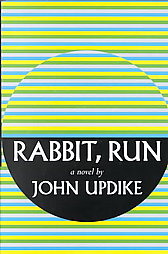
Rabbit, Run is a 1960 novel by John Updike. The novel depicts three months in the life of a 26-year-old former high school basketball player named Harry "Rabbit" Angstrom, who is trapped in a loveless marriage and a boring sales job, and attempts to escape the constraints of his life. It spawned several sequels, including Rabbit Redux, Rabbit is Rich and Rabbit at Rest, as well as a related 2001 novella, Rabbit Remembered. In these novels, Updike takes a comical and retrospective look at the relentless questing life of Rabbit against the background of the major events of the latter half of the 20th century.
The CWA Gold Dagger is an award given annually by the Crime Writers' Association of the United Kingdom since 1960 for the best crime novel of the year.

The Tree of Hands is a 1984 suspense novel by the author Ruth Rendell. It won the CWA Silver Dagger in 1984, and was short listed for the MWA Edgar Award upon publication in America. The book has been filmed twice. One adaptation featured Lauren Bacall as the protagonist's mother.
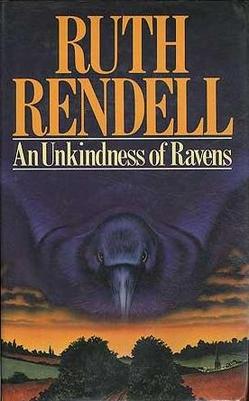
An Unkindness of Ravens is a murder mystery by British crime-writer Ruth Rendell. First published in 1985, it is the 13th in her series featuring Inspector Wexford.
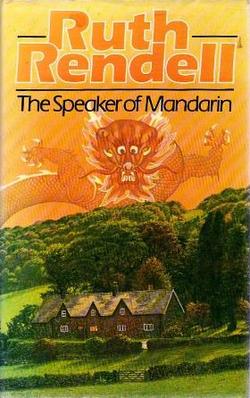
The Speaker of Mandarin is a detective novel by British crime writer Ruth Rendell, first published in 1983. It is the 12th novel in her popular Inspector Wexford series. The plot follows the popular Kingsmarkham policeman as he returns from a holiday to China and investigates the death of another tourist.
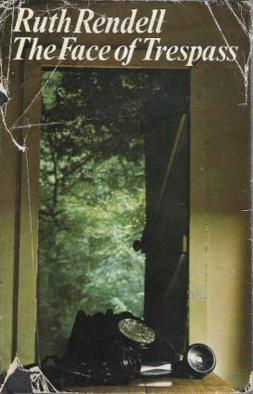
The Face of Trespass is a psychological thriller novel by British writer Ruth Rendell, first published in 1974. The novel, largely told in flashbacks, follows Graham "Gray" Lanceton, a writer involved with a woman named Drusilla Browne who asks him to kill her wealthy husband. Lanceton becomes entangled in an intense, destructive affair with Browne, whom he sees as a "succubus."
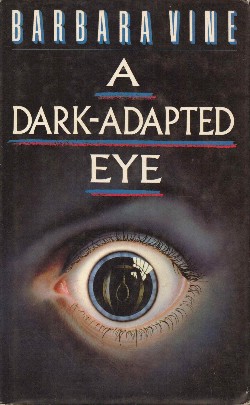
A Dark-Adapted Eye (1986) is a psychological thriller novel by Ruth Rendell, written under the pen name Barbara Vine. The novel won the American Edgar Award. It was adapted as a television film of the same name in 1994 by the BBC.
Eleanor M. David is a British actress who has worked on projects in the UK, the US and New Zealand. She won positive reviews for her starring role in the biopic Sylvia, in which she played pioneering educationalist Sylvia Ashton-Warner.

The Last Coyote is the fourth novel by American crime author Michael Connelly, featuring the Los Angeles detective Hieronymus "Harry" Bosch. It was first published in 1995 and the novel won the 1996 Dilys Award given by the Independent Mystery Booksellers Association.

The Glass Cell (1964) is a psychological thriller novel by Patricia Highsmith. It was the tenth of her 22 novels. It addresses the psychological and physical impact of wrongful imprisonment. It appeared in both the UK and the US in 1964. When first published, the book jacket carried a warning that its opening scene is "almost unacceptable".
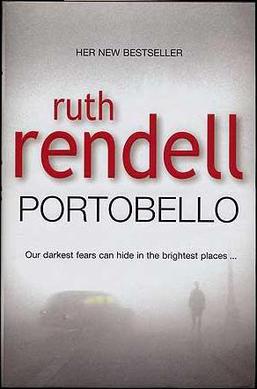
Portobello is a novel by British writer Ruth Rendell, published in 2008. It is set in and around the Portobello Road in Notting Hill, London. Written in the third-person narrative mode, it follows the lives of a number of Londoners—rich and poor alike—living near the Portobello Road Market whose paths cross by accident rather than design. In other words, Portobello is about "the destinies of an oddly assorted group of people, whose only common characteristic is their postcode."
Eileen Buckholtz, née Garber was a United States novelist from 1982 to 1997. She wrote under her married name in collaboration with Ruth Glick, and also in collaboration with her under the pseudonyms of Amanda Lee and Rebecca York until 1997.

Tigerlily's Orchids is a 2010 book by the British crime-writer Ruth Rendell. It is her 60th published novel.

The Saint Zita Society is the 62nd novel by British crime-writer Ruth Rendell, a standalone novel. It is not part of her popular Inspector Wexford series.
Joan Kahn was a New York City-based American author, anthologist, and editor, widely regarded as the preeminent mystery/suspense editor of her time. Described variously as the "doyenne of suspense," "the doyenne of mystery editors," and "publishing's grande dame of detective stories," Kahn first came to prominence during her extended reign (1946-1980) at Harper & Brothers, much of it spent creating and overseeing the longstanding "Harper Novel of Suspense" series. The Joan Kahn imprint, instituted during her Harper tenure, soon became a sought-after imprimatur for mystery connoisseurs. Some of Kahn's more celebrated signings include John Creasey, Patricia Highsmith, Julian Symons, Dick Francis, and Tony Hillerman.

Dark Corners is a 2015 crime fiction novel by British writer Ruth Rendell, the last she wrote before her death that same year. The novel has no dedication or epigraph. The title of the book is taken from a phrase in the William Shakespeare play Measure for Measure.














